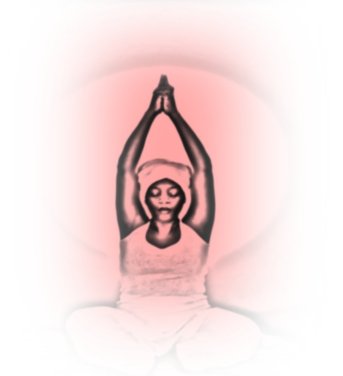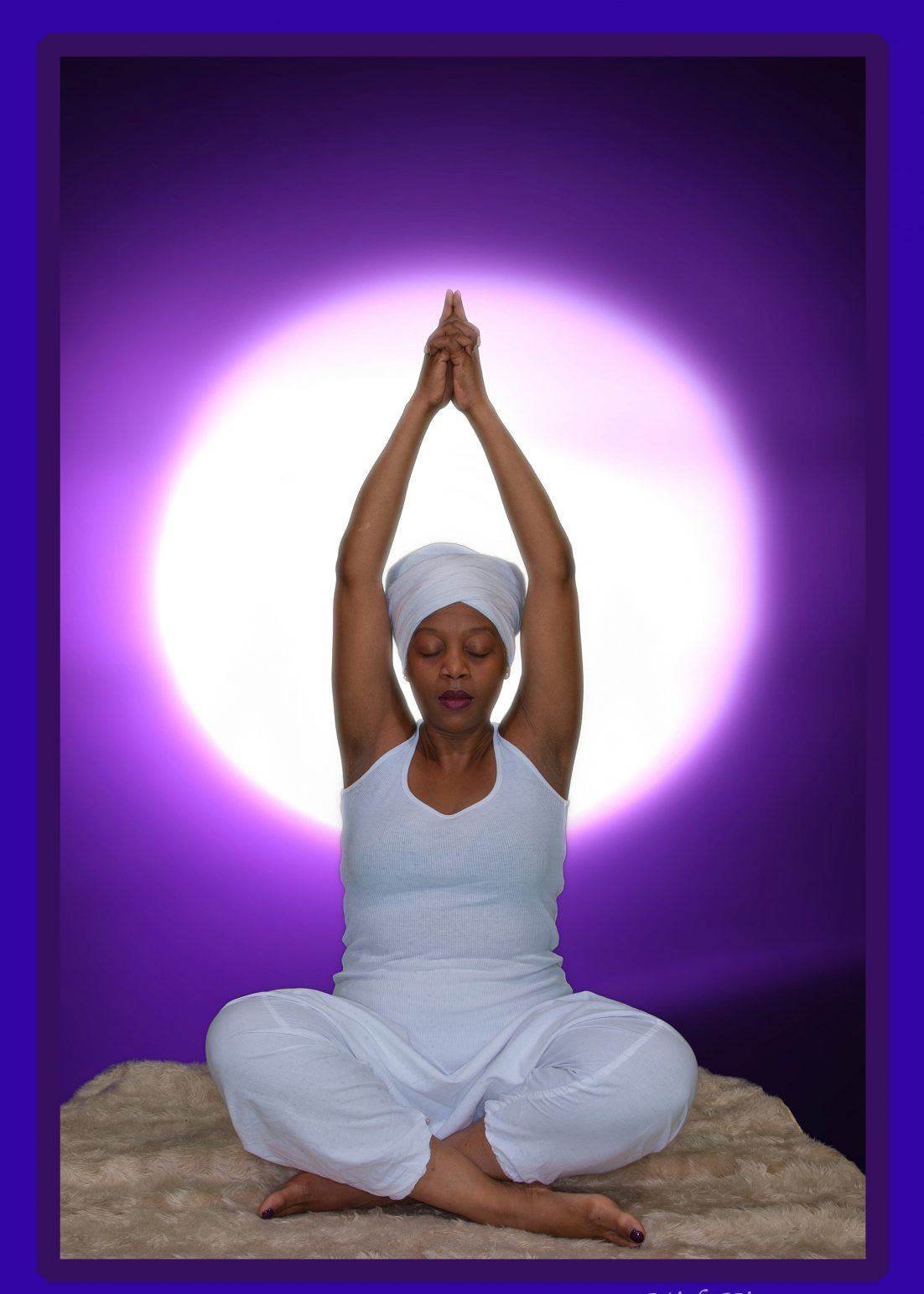Kundalini Yoga
A Supreme technology, to awaken your awareness, take you into your original self. It is a natural unfolding of your own nature. Human Consciousness
Kundalini Yoga
What is Kundalini Yoga?
Kundalini Yoga is a science. Combining a series of ‘Yoga postures’, (Kyria) Breath, mantra’s & meditation. Which works on the ‘Seven Chakra’s’, the ‘Arc line’ and the ‘Aura’ the Eighth Chakra. It works directly on the flow of energy.
What is a Kriya?
A ‘Kriya’ is a set of yoga postures, combining the breath, Mantra’s & Meditation. To allow the manifestation of a particular state.
What is a Mantra?
A Mantra is a sequence of sounds designed to direct the mind by their rhythmic repetition.
What is Prana?
‘Prana’ is life force, the Breath. The key to controlling the mind is controlling the breath. In this way you filter your thoughts so that each as a positive resolution by linking the breath to a ‘Mantra’. The mind follows the breath.

Meditation
When to meditate any time is good for you, particularly if it is the same time every day.
Keep in mind that first thing in the morning, the Amrit Vela, is best because it sets you for the whole day and is naturally a quiet, reflective time (especially before sunrise). 4am-7am, this is the ambrosial hours.
In the evening (at sunset or just before going to bed) is also a good time. 4pm-7pm, this time is called prayer time.
Meditation Location
Choose a place you won’t be disturbed, feel vulnerable, or get distracted. Try to use the same place daily. Make it your spot; you can fill it with candles, flowers, spiritual images and/or pictures of beautiful places, and anything else that is uplifting, calming, inspiring. Sit on a sheepskin, natural fibre blanket or, if needed, a firm cushion or on a chair dedicated for this purpose.
Commit to a Meditation
Whatever meditation you choose to do, to get the maximum benefit, fully commit to doing it for a certain amount and length of time. Keep in mind that 3 minutes a day is more effective than 31 minutes once a week. If you do miss a day, don’t beat yourself up, just start again and keep up!

Tune-in with the Mantra Om
Chant Om three times before beginning the meditation. You can also choose to do a yoga kriya or some warm-ups after tuning in.
Set Your Intention
Have a clear picture of what the result of this meditation will be for you. Why have you chosen to do it? The clearer your focus and intention, the more power behind the meditation. You get what you project, so project the result.
Meditation Minutes
Yogic science says that there are specific lengths of time needed for certain desired effects in meditation. Thus, meditations (and exercises in a kriya) are held for a specified period of time.
3 minutes: Affects circulation (blood) and electromagnetic field.
11 minutes: Changes glandular system and nerves.
22 minutes: Balances and coordinates the three minds.
31 minutes: Affects all the cells and rhythms of the body and all layers of the mind’s projection.
62 minutes: Changes the grey matter of the brain. Integrates the subconscious “shadow mind” and the outer projection.
2 ½ hours: Holds the new pattern in the subconscious mind by the surrounding universal mind.



May 29, 2019 at 4:12 pm
Really like this …Thank you for sharing ….. appreciate the explanations and recommendations
This method is something that I will consider doing myself .
LikeLiked by 1 person
May 29, 2019 at 10:53 pm
Thank you Leigh, I will be posting very soon yoga sets as taught by Yogi Yogi Bhajan. Workshops, and bespoke classes coming soon
LikeLiked by 1 person
June 14, 2019 at 5:05 pm
Thank you Leigh…a Happy Balance is a Happy Healthy Life….
LikeLike